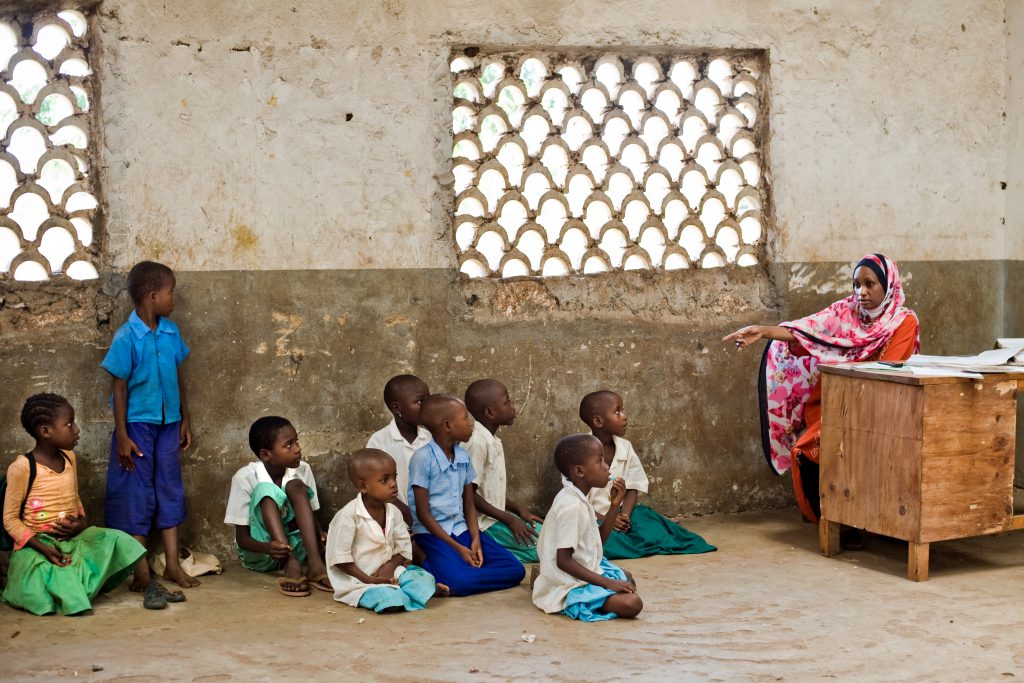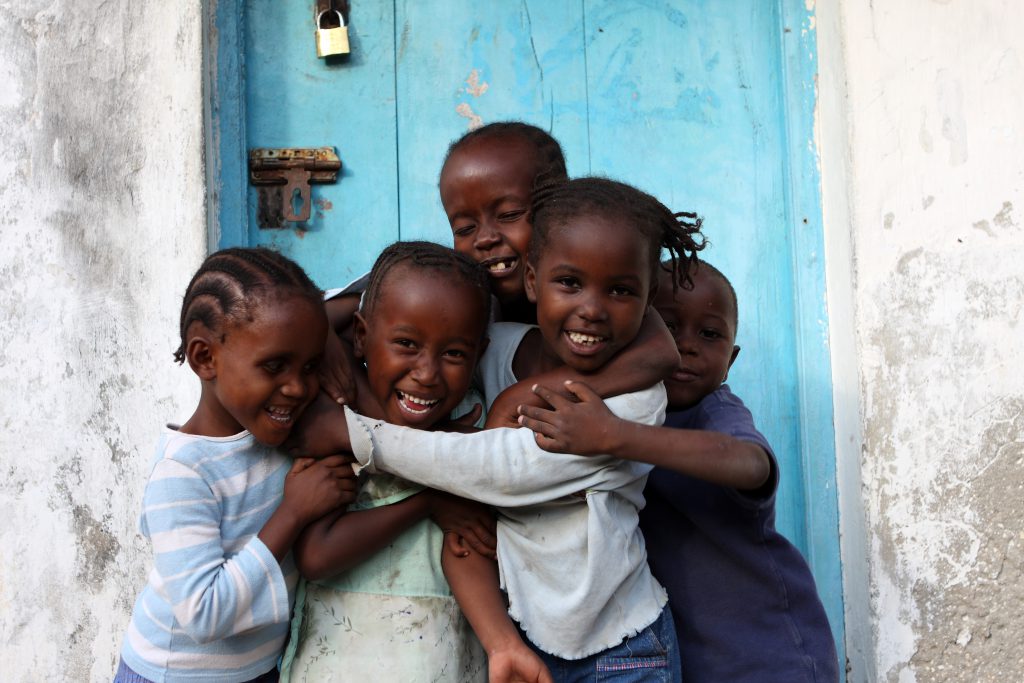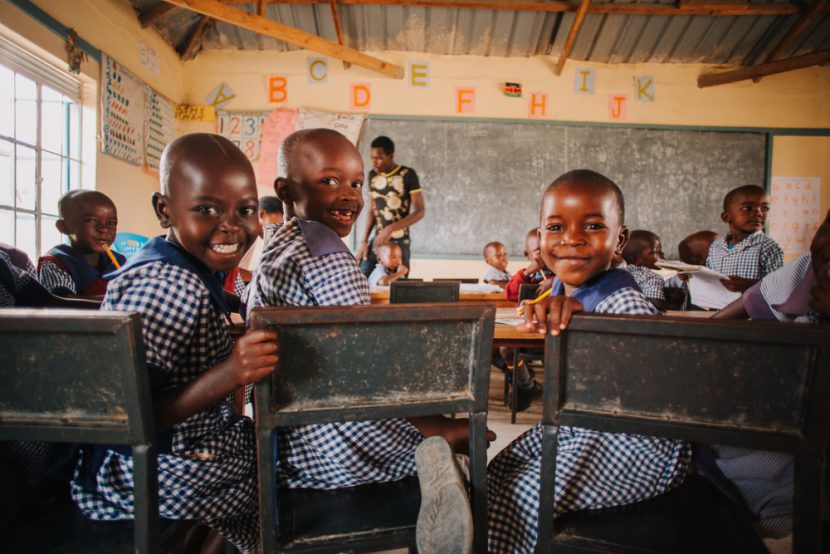A study conducted in nine African countries (including Kenya) by Human Rights Watch (HRW) between April and August 2020 revealed that COVID-19 is exacerbating previous inequalities by excluding vulnerable children from receiving quality education (Human Rights Watch, 2020). As of November 11, 2020, Kenya had reported 64, 588 COVID-19 cases, with 1,154 deaths (John Hopkins University, 2020). Despite national efforts and strict measures designed to curb the spread of the virus, the country continues to suffer from the knock-on effects of the pandemic (BBC, 2020).
Of particular concern is the plight of children, as well as their inalienable and fundamental right to education. Enshrined in Article 53(1) of the Kenyan Constitution (Constitution of the Republic of Kenya, 2010), the right to education is at risk now, more than ever before. In a country with large numbers of underprivileged children, the global pandemic is severely restricting young people’s ability to access quality education, exposing them to further grave human rights violations.
The Right to Education in Kenya During COVID-19 Pandemic
COVID-19 school closures hinder Kenya’s Vision 2030 National Development Goals which try to achieve quality education for all (Ngwacho, 2020). The ten-year action plan aims to address and implement the Sustainable Development Goals (United Nations General Assembly, 2015) and thus safeguard the right to education. Under this framework and before the COVID-19 virus spread across the world, the government had prioritized digital literacy via its “digischool” program – which aims to equip all students with the digital tools necessary to succeed in the modern world (ICT Authority of Kenya)
Following the country’s first COVID-19 case on March 13, 2020, schools were abruptly shut and have remained closed ever since, with children in most year groups having to repeat their 2020 school year in 2021 (Njenga, 2020). The closure of schools affected over 18 million children in Kenya and has subsequently prompted the development of a COVID-19 response plan (Kenya Basic Education COVID-19 Emergency Response Plan).
Through this initiative the Government of Kenya has provided remote teaching support using the internet and television and has encouraged academic institutions to adapt teaching material to create a more accessible online learning environment (Ngwacho, 2020). This plan targets both vulnerable students and teachers and aims to capitalize on existing radio infrastructure to enhance the possibility of ‘community-based learning’ (Global Partnership, 2020).

In the words of the Cabinet Secretary for Education and the Director General for the Ministry of Health, Kenya is rightly prioritizing the right of all Kenyan children to life above all else: “Kenya has no apologies for locking up schools to safeguard the children of Kenya because every child has a right to live” (Wafula, 2020), while the country plans for the long-term “marathon measures” which will need to be in place to guarantee quality education for all in a post-COVID-19 world (Onsongo, 2020).
As of October 12th, 2020, students from priority year groups deemed as ‘examination candidates in transition years’ have been asked to return to schools in COVID-safe environments (Muchunguh & Nyamai, 2020) and to sit examinations to prevent their overall school trajectory from being detrimentally affected. The country still faces budgetary and logistical challenges in implementing social distancing measures on school campuses (Wahito, 2020), prompting the President to call for further action (Muchunguh, 2020). Although the Ministry of Education provided masks to all returning students, issues around water availability and sanitation mean that handwashing stations cannot be guaranteed (Ambani, 2020).
What are Primary Challenges in Ensuring the Right to Education?
Remote Learning, Technology and Digital Literacy
One of the most immediate challenges is the country’s inability to provide effective and accessible remote learning opportunities for children. Marginalized children with implicit vulnerabilities such as those with disabilities; living in informal settlements, slums or remote locations; asylum seekers and refugees are at a greater risk of failing to benefit from remote learning opportunities (Ngwacho, 2020).
As of 2016, 50% of Kenyans did not have access to the Internet (United Nations Economic and Social Council, 2016), while children often do not have access to Internet, laptops or the Internet-enabled smartphones in order to carry out their work (Human Rights Watch, 2020) in spite of past government promises to provide all children with this equipment (Jelimo, 2020). This lack of access combined with the cost of Internet data is exacerbated in more rural areas, creating a digital divide which is separating the large majority of Kenyan students from education (Ngwacho, 2020).
Even where children have Internet access, remote learning programs lack reliable infrastructure, as teachers have limited knowledge of online teaching and the country has had little time to prepare for its realities (Jelimo, 2020). The Kenya Institute of Curriculum Development’s (KICD) Education Cloud is a positive step. This organization is attempting to centralize education and teaching to make vital school resources more accessible; however, this material is only valuable to the limited few who can access it (Njenga, 2020). Students with access to the Internet have further revealed that the cost of internet access forces them to prioritize which material to download, limiting the impact of available resources (Human Rights Watch, 2020).
The Negative Effects on Girls
Disproportionately, girls, especially those from low-income backgrounds, are at greater risk of social exclusion from educational opportunities (Odhiambo, 2020). Considering the pre-existing gender disparities, girls, who already face stern barriers to education such as female genital mutilation (FGM) and forced early child marriage, are now in danger of being exposed to sexual violence and exploitation, child marriage and child trafficking (Odhiambo, 2020). Schools have traditionally provided ‘safe havens’ for girls, which means that not attending school exposes them to greater risks of sexual violence and exploitation, child marriage and child trafficking (Odhiambo, 2020).

This is evidenced by recent local statistics, which show an increase in teen pregnancy, child labor and sexual acts in exchange for food or money due to the extenuating circumstances created by COVID-19 (Kenya Citizen News TV, 200). These atrocities are often unreported. What remains clear is that traditional expectations of the role of young girls is to care for the house and young children, restricting their ability to participate in education remotely (Human Rights Watch, 2020).
Poverty, Resources and Marginalized Children
The widespread poverty and inequality existent in Kenya create numerous additional challenges for children. Education systems remain underfunded, as evidenced by the large number of public and private schools currently unable to pay their staff and those that have been forced to convert school premises into small pastoral and agricultural farms in order to make money (BBC, 2020). Simultaneously, children in positions of vulnerability such as those with disabilities , living in poverty (often in cramped and difficult living environments lacking basic necessities) or those in close proximity to armed conflict and insecurity are further at risk of marginalization (Human Rights Watch, 2020).
Prior to the pandemic, children with disabilities were already failing to receive adequate support, while those in conflict zones were frequently uprooted from school due to recent rises in terrorist and/or violent activity (Human Rights Watch, 2020). These schools provide vulnerable children with more than just education, as they are often vital sources of free school meals. Further, with parents facing increased unemployment, children are being pushed towards child labor as primary income providers, without the safety net of school to shield them (Jelimo, 2020).
What is the Right Way Forward?
Many East African countries have a long way to go in achieving Sustainable Development Goal 4 – inclusive and equitable quality education. Greater budgetary allocation is required to combat this challenge in Kenya (Global Partnership for Education, 2020). The UN Special Rapporteur on Education has reiterated that the fundamental right to education must be protected even in times of emergency (United Nations Human Rights Council, 2020), mimicking the principles outlined in Article 17 of the African Charter on Human and People’s Rights and Article 11 of the African Charter for the Rights and Welfare of the Child (Human Rights Watch, 2020).
Practically, as demonstrated in recent scholarship (Odhiambo, 2020) and as highlighted in the Convention on the Rights of the Child’s (CRC) 4A-framework (United Nations Human Rights Council, 2020) to assess challenges and priorities and ensure that no vulnerable child is left behind, education must align with the principles of:
- Availability – That systems are in place to safely enable in-person (in the case of students in transition years) and remote learning.
- Accessibility – That children are able to participate in distance-learning noting the specific socio-political and cultural challenges faced by vulnerable children and girls. Mapping and tracking the accessibility of education across the country would be helpful in this regard.
- Acceptability – That the quality of distance and in-person learning provided during the pandemic is high, with the educational materials being culturally appropriate for the children.
- Adaptability – That education provided during this time is adaptable to the changing needs of society in the face of the pandemic and supports all cultural settings.
The “4As” framework is a powerful tool to contextualize inequalities and build a culture of inclusivity and cooperation among education systems, while safeguarding the human rights of children in these dangerous times. The physical and mental health risks (such as depression, anxiety and isolation) that children are exposed to in the current climate are grave (Human Rights Watch, 2020). The CRC does not contain a derogation clause and thus the right to education must be protected, while measures to curtail this right to protect public health “must be imposed only when necessary, be proportionate and kept to an absolute minimum” (Human Rights Council, 2020).
These interventions should be made in the spirit of Article 3(1) of the CRC which uplifts the “best interests of the child” as a principle of utmost importance (United Nations Convention on the Rights of the Child, 1989). Schools have been shown to be the best way for pupils to achieve their full potential and in the words of Dr. Amoth, Technical Advisor to the Health Cabinet Secretary: “we cannot lose a generation because of a pandemic” (Muchunguh & Nyamai, 2020).

At Humanium, we seek to raise awareness of the importance of children’s rights to education, life and protection. Join us in making children’s rights to a safe environment and accessible education a reality by sponsoring a child, making a donation or becoming a volunteer!
Written by Vanessa Cezarita Cordeiro
For More Information:
Kenya Institute of Curriculum Development
General Comment No. 13: The right to education (article 13) (1999) (Adopted by the Committee on Economic, Social and Cultural Rights at the Twenty-first Session, E/C.12/1999/10, 8 December 1999)
General Comment No. 1: The Aims of Education (article 29) (2001) (Adopted by the Committee on the Rights of the Child at the Twenty-sixth Session, CRC/GC/2001/1, 17 April 2001)
References:
BBC. (2020, August 25). Coronavirus in Kenya: How it turned classrooms into chicken coops.
Global Partnership for Education. Kenya: Putting education at the center of development COVID-19 Response.
Jelimo, C. (2020, August 31). Impact of COVID-19 on the right to education in Kenya.
John Hopkins Research Center. (2020, November 11). Coronavirus Resource Center.
Laws of the Republic of Kenya, Constitution of Kenya 2010.
Muchunguh, D. (2020, November 2). New school opening date presents 2021 transition headache.
Muchunguh, D. (2020, November 2). 2021 it is for Kenyan schools.
Muchunguh, D. (2020, November 2). New school opening date presents 2021 transition headache.
Muchunguh, D and Nyamai, F. (2020, October 20). Kenya: Back-to-school in Limbo Amid COVID-19 Spike.
Muchunguh, D & Nyamai, F. (2020, October 30). Full school reopening plans in top gear.
Ngwacho, A.G. (2020). COVID-19 Pandemic Impact on Kenyan Education Sector: Learner Challenges and Mitigations. Journal of Research Innovation and Implications in Education, 4.
Njenga, G. The Impact of COVID-19 on Education in Kenya.
Nyanjong, A. (2020, September 28). Realizing the Right to Education During the Global Health Crisis.
Odhiambo, A. (2020, April 15). How girls´ education and safety will be harmed by the COVID response.
Onsongo, D. (2020, November 2). Uhuru to lead talks on school reopening tomorrow.
Ojamaa, B. (2020, November 3). 52 students test positive for COVID-19 in Busia.
Wahito, K. (2020, October 29). School calendar in disarray due to COVID-19 crisis.
World Bank. (2020, May 26). Education Systems’ Response to COVID-19.


